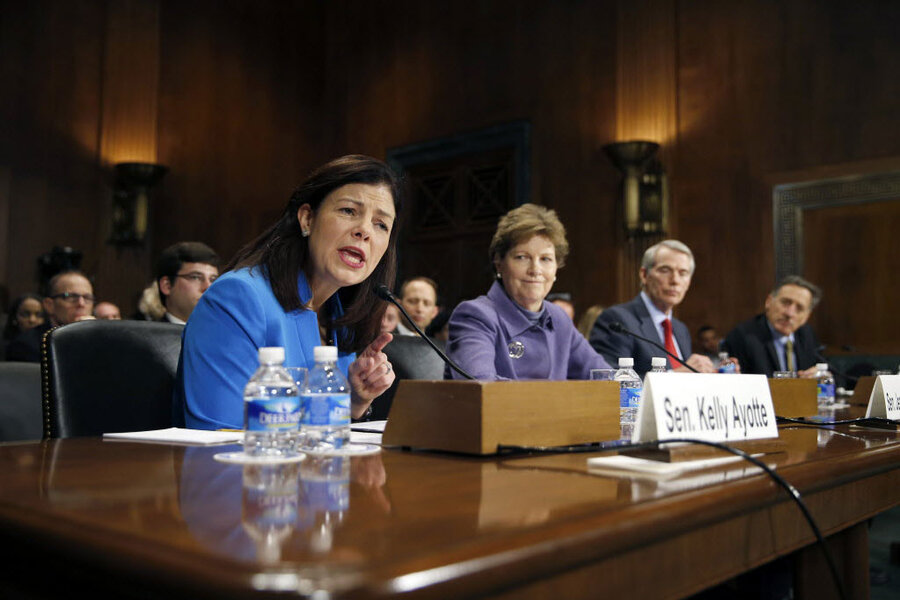Obama's $1 billion to fight heroin reflects shifting views of addiction
Loading...
President Obama will seek $1 billion in additional funding to fight an epidemic of heroin and prescription pill-addiction next week, responding to a sea change in Americans' attitudes toward opiate drugs brought on, in part, by users' rapidly-changing demographics.
The White House's 2017 budget recommendations, which will be unveiled next Tuesday, include nearly $1.1 billion to be spent on addiction treatment over the next two years. In 2016, the federal government plans to spend $127 million on similar programs, already a dramatic increase from the $34 million spent in fiscal year 2015.
The sudden jumps reflect newfound bipartisan interest in tackling opiate addictions that resulted in almost 29,000 deaths in 2014 alone. Frequently, lawmakers and law enforcement are pursuing policies that aim not just to punish, but to heal, reflecting two trends that some say have developed hand-in-hand: viewing addiction as a disease, not a crime, and the changing face of American heroin use.
In the past, heroin use has largely been relegated to the fringes of society. Today, however, heroin addiction has seeped into communities that once seemed immune, as athletes, mothers, and others who otherwise seem to have their lives together have slipped into opioid dependence after first becoming dependent on prescription pain killers. Where it once was found almost exclusively in cities, the drug has become highly common in suburban and rural communities as well. Recent increases have impacted every income range and most age levels, according to the Centers for Disease Control and Prevention, particularly groups with historically low rates of heroin use. Over the past decade, heroin use has doubled among women and young adults.
Some 45 percent of addicts are also addicted to prescription opioid painkillers, especially in rural areas where they are often recommended for work-related injuries. In 2014, the highest rates of opioid-related deaths were recorded in West Virginia, New Mexico, New Hampshire, Kentucky, and Ohio.
The Obama administration has supported initiatives that connect addicts with resources, channeled through both state and federal programs. An estimated 2.2 million Americans require opiate treatment, but fewer than half receive it, Health and Human Services Secretary Sylvia Mathews Burwell told reporters.
Of the proposed $1.1 billion, $920 million would go to states, and an additional $500 million, most of it from existing funds, would be used by the departments of Health and Human Services, and Justice, according to The Washington Post. In particular, many programs would help doctors provide overdose-reversal drugs such as naloxone.
Despite bipartisan interest in fighting the epidemic, it is unclear whether Congress will back Obama's proposed funding. The White House has not yet endorsed the Comprehensive Addiction and Recovery Act, sponsored by Sen. Rob Portman (R) of Ohio, which has support on both sides of the aisle.
In January, Obama appointed Agriculture Secretary Tom Vilsack to lead solutions on a number of interwoven problems in rural states, from rising suicide rates and heroin use to painkiller abuse, which some attribute to economic struggles in regions historically reliant on manual labor-based industries like mining.
But addiction is growing across all socio-economic groups, which some experts say is bringing a powerful new voice to debates about addiction: middle- and upper-class parents, who are lobbying for the government to heal, not jail, their children.
"Because the demographic of people affected are more white, more middle class, these are parents who are empowered," Michael Botticelli, the White House Office of National Drug Control Policy director, told The New York Times in 2015. "They know how to call a legislator, they know how to get angry with their insurance company, they know how to advocate. They have been so instrumental in changing the conversation."
Combined with growing research on the science of addiction, that attitude shift has more doctors, police officers, and treatment specialists reconsidering their approach, often shifting from language of ultimatums and "kicking" addiction to a more compassionate, long-term view of addiction as a chronic illness.
"We blame patients for their disease," Dr. Sarah Wakeman, who runs a treatment initiative at Massachusetts General Hospital, told Boston's WBUR. "We also kick people out of treatment for having symptoms of their disease with addiction, which would honestly be malpractice if we did that with other conditions."
Not everyone is happy with the shifts in treatment. But in Congress, Republicans and Democrats alike have seen heroin's devastation, Ms. Burwell said, and they're ready to see the government commit more resources against addiction.
"This is about ... making progress on problems that are front and center in many of the communities they (represent)," she said.
This report includes material from Reuters and The Associated Press.






